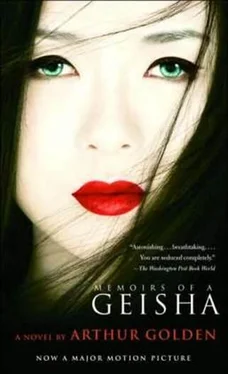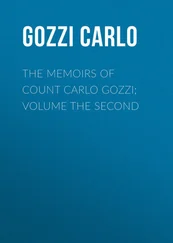When I asked Sayuri’s permission to use a tape recorder, I intended it only as a safeguard against any possible errors of transcription on the part of her secretary. Since her death last year, however, I have wondered if I had another motive as well-namely, to preserve her voice, which had a quality of expressiveness I have rarely encountered. Customarily she spoke with a soft tone, as one might expect of a woman who has made a career of entertaining men. But when she wished to bring a scene to life before me, her voice could make me think there were six or eight people in the room. Sometimes still, I play her tapes during the evenings in my study and find it very difficult to believe she is no longer alive.
Jakob Haarhuis
Arnold Rusoff Professor of Japanese History
New York University
Although the character of Sayuri and her story are completely invented, the historical facts of a geisha’s day-to-day life in the 1930s and 1940s are not. In the course of my extensive research I am indebted to one individual above all others. Mineko Iwasaki, one of Gion’s top geisha in the 1960s and 1970s, opened her Kyoto home to me during May 1992, and corrected my every misconception about the life of a geisha-even though everyone I knew who had lived in Kyoto, or who lived there still, told me never to expect such candor. While brushing up my Japanese on the airplane, I worried that Mineko, whom I had not yet met, might talk with me for an hour about the weather and call it an interview. Instead she took me on an insider’s tour of Gion, and together with her husband, Jin, and her sisters, Yaetchiyo and the late Kuniko, patiently answered all my questions about the ritual of a geisha’s life in intimate detail. She became, and remains, a good friend. I have the fondest memories of her family’s trip to visit us in Boston, and the otherworldly sense my wife and I felt while watching tennis on television in our living room with our new friend, a Japanese woman in her forties who also happened to be one of the last geisha trained in the old tradition.
To Mineko, thank you for everything.
I was introduced to Mineko by Mrs. Reiko Nagura, a longtime friend and a fiercely intelligent woman of my mother’s generation, who speaks Japanese, English, and German with equal fluency. She won a prize for a short story she wrote in English while an undergraduate at Barnard, only a few years after first coming to the United States to study, and soon became a lifelong friend of my grandmother’s. The affection between her family and mine is now in its fourth generation. Her home has been a regular haven on my visits to Tokyo; I owe her a greater debt than I can express. Along with every other kindness she has done for me, she read over my manuscript at various stages and offered a great many invaluable suggestions.
During the years I have worked on this novel, my wife, Trudy, has provided more help and support than I had any right to expect. Beyond her endless patience, her willingness to drop everything and read when I needed her eye, and her frankness and extreme thoughtfulness, she has given me that greatest of gifts: constancy and understanding.
Robin Desser of Knopf is the kind of editor every writer dreams about: passionate, insightful, committed, always helpful-and a load of fun besides.
For her warmth, her directness, her professionalism, and her charm, there is no one quite like Leigh Feldman. I am extremely lucky to have her for an agent.
Helen Bartlett, you know all you did to help me from early on. Thanks to you, and to Denise Stewart.
I’m very grateful to my good friend Sara Laschever, for her careful reading of the manuscript, her generous involvement, and her many thoughtful suggestions and ideas.
Teruko Craig was kind enough to spend hours talking with me about her life as a schoolgirl in Kyoto during the war. I am grateful also to Liza Dalby, the only American woman ever to become a geisha, and to her excellent book, Geisha , an anthropological study of geisha culture, which also recounts her experiences in the Pontocho district; she generously lent me a number of useful Japanese and English books from her personal collection.
Thanks also to Kiharu Nakamura, who has written about her experiences as a geisha in the Shimbashi district of Tokyo, and kindly spent an evening talking with me during the course of my research.
I am grateful, too, for the thoughtful insights and empathetic concern of my brother, Stephen.
Robert Singer, curator of Japanese art at the Los Angeles County Museum of Art, went to considerable trouble while I was in Kyoto to show me firsthand how aristocrats there once lived.
Bowen Dees, whom I met on an airplane, permitted me to read his unpublished manuscript about his experiences in Japan during the Allied Occupation.
I’m thankful also to Allan Palmer for giving me the benefit of his extensive knowledge of tea ceremony and Japanese superstitions.
John Rosenfield taught me Japanese art history as no one else can, and made a university as gigantic as Harvard feel like a small college. I’m grateful to him for helpful advice all along the way.
I’m profoundly in Barry Minsky’s debt, for the valuable role he played as I worked to bring this novel into being.
In addition, for their kindnesses too numerous to recount, thanks to David Kuhn, Merry White, Kazumi Aoki, Yasu Ikuma, Megumi Nakatani, David Sand, Yoshio Imakita, Mameve Medwed, the late Celia Millward, Camilla Trinchieri, Barbara Shapiro, Steve Weisman, Yoshikata Tsukamoto, Carol Janeway of Knopf, Lynn Pleshette, Denise Rusoff, David Schwab, Alison Tolman, Lidia Yagoda, and Len Rosen.

Suppose that you and I were sitting in a quiet room overlooking a garden, chatting and sipping at our cups of green tea while we talked about something that had happened a long while ago, and I said to you, “That afternoon when I met so-and-so… was the very best afternoon of my life, and also the very worst afternoon.” I expect you might put down your teacup and say, “Well, now, which was it? Was it the best or the worst? Because it can’t possibly have been both!” Ordinarily I’d have to laugh at myself and agree with you. But the truth is that the afternoon when I met Mr. Tanaka Ichiro really was the best and the worst of my life. He seemed so fascinating to me, even the fish smell on his hands was a kind of perfume. If I had never known him, I’m sure I would not have become a geisha.
I wasn’t born and raised to be a Kyoto geisha. I wasn’t even born in Kyoto. I’m a fisherman’s daughter from a little town called Yoroido on the Sea of Japan. In all my life I’ve never told more than a handful of people anything at all about Yoroido, or about the house in which I grew up, or about my mother and father, or my older sister-and certainly not about how I became a geisha, or what it was like to be one. Most people would much rather carry on with their fantasies that my mother and grandmother were geisha, and that I began my training in dance when I was weaned from the breast, and so on. As a matter of fact, one day many years ago I was pouring a cup of sake for a man who happened to mention that he had been in Yoroido only the previous week. Well, I felt as a bird must feel when it has flown across the ocean and comes upon a creature that knows its nest. I was so shocked I couldn’t stop myself from saying:
“Yoroido! Why, that’s where I grew up!”
This poor man! His face went through the most remarkable series of changes. He tried his best to smile, though it didn’t come out well because he couldn’t get the look of shock off his face.
Читать дальше













